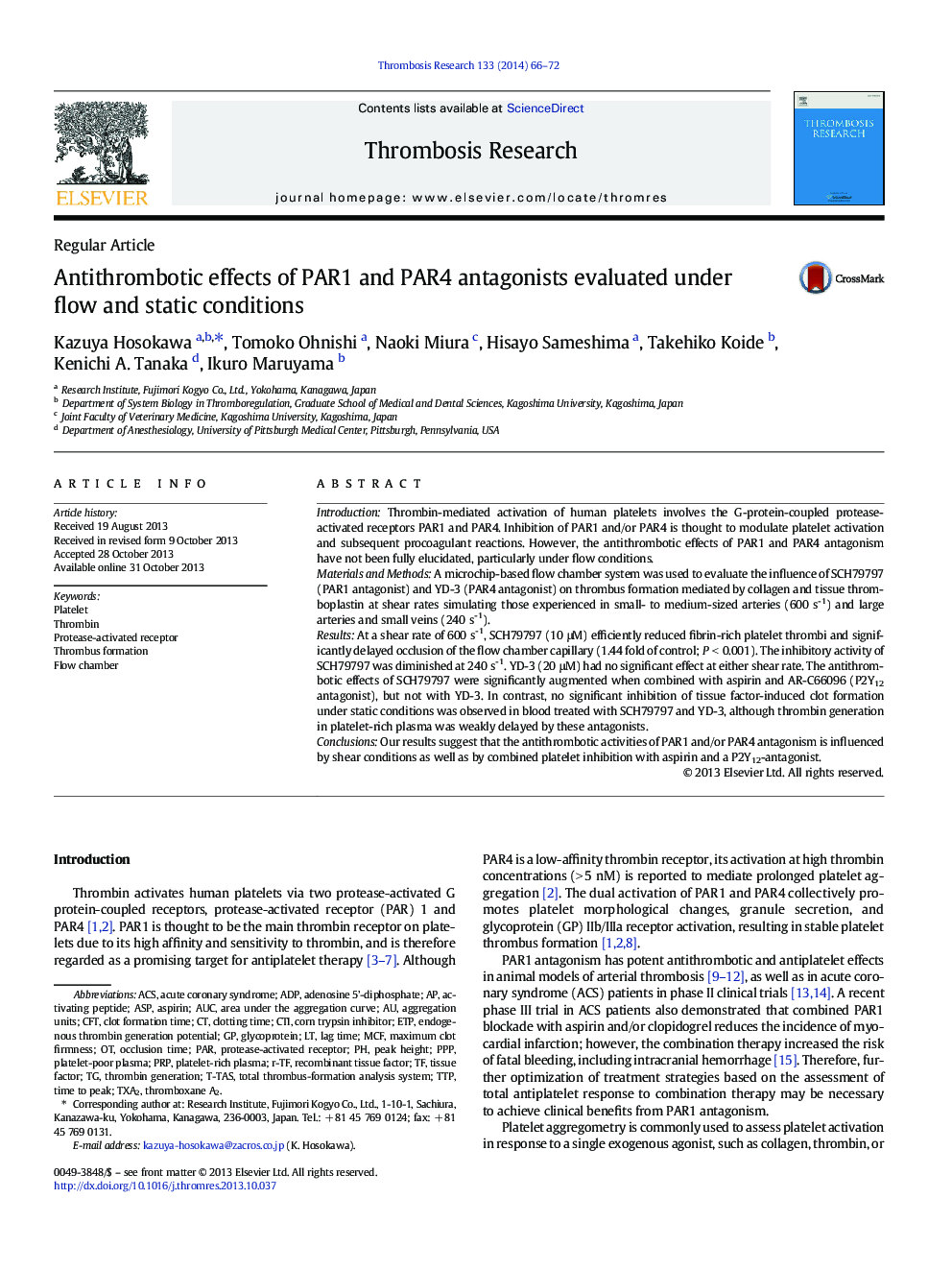| Article ID | Journal | Published Year | Pages | File Type |
|---|---|---|---|---|
| 6001662 | Thrombosis Research | 2014 | 7 Pages |
IntroductionThrombin-mediated activation of human platelets involves the G-protein-coupled protease-activated receptors PAR1 and PAR4. Inhibition of PAR1 and/or PAR4 is thought to modulate platelet activation and subsequent procoagulant reactions. However, the antithrombotic effects of PAR1 and PAR4 antagonism have not been fully elucidated, particularly under flow conditions.Materials and MethodsA microchip-based flow chamber system was used to evaluate the influence of SCH79797 (PAR1 antagonist) and YD-3 (PAR4 antagonist) on thrombus formation mediated by collagen and tissue thromboplastin at shear rates simulating those experienced in small- to medium-sized arteries (600 s- 1) and large arteries and small veins (240 s- 1).ResultsAt a shear rate of 600 s- 1, SCH79797 (10 μM) efficiently reduced fibrin-rich platelet thrombi and significantly delayed occlusion of the flow chamber capillary (1.44 fold of control; P < 0.001). The inhibitory activity of SCH79797 was diminished at 240 s- 1. YD-3 (20 μM) had no significant effect at either shear rate. The antithrombotic effects of SCH79797 were significantly augmented when combined with aspirin and AR-C66096 (P2Y12 antagonist), but not with YD-3. In contrast, no significant inhibition of tissue factor-induced clot formation under static conditions was observed in blood treated with SCH79797 and YD-3, although thrombin generation in platelet-rich plasma was weakly delayed by these antagonists.ConclusionsOur results suggest that the antithrombotic activities of PAR1 and/or PAR4 antagonism is influenced by shear conditions as well as by combined platelet inhibition with aspirin and a P2Y12-antagonist.
